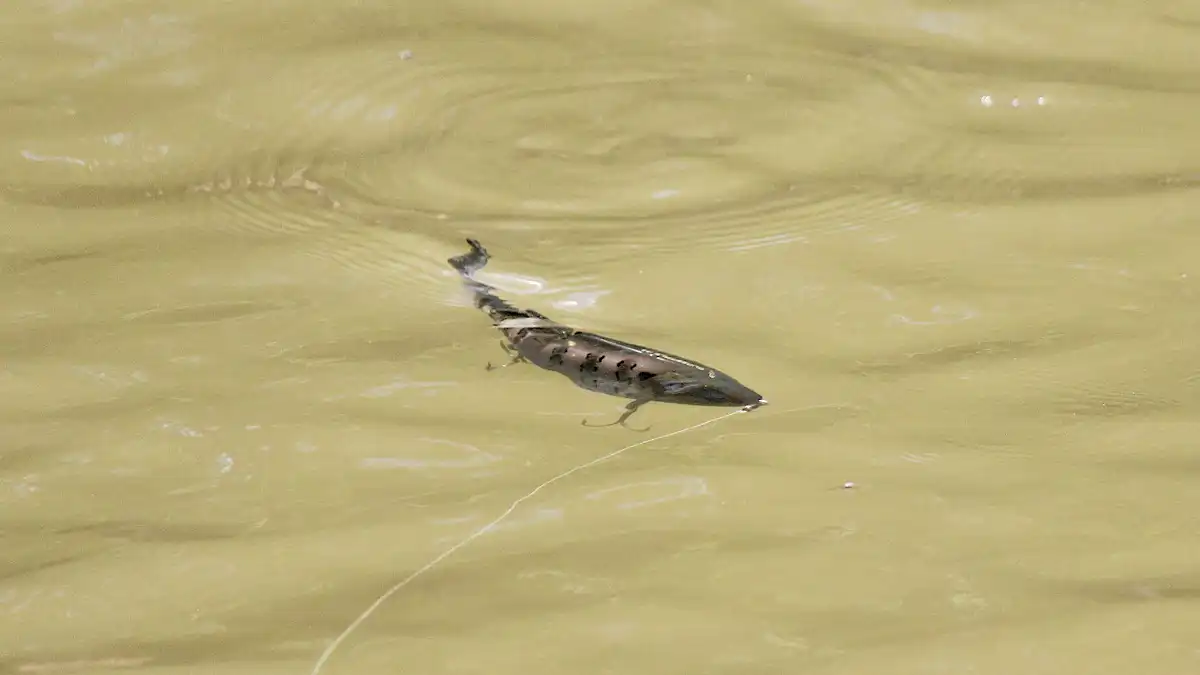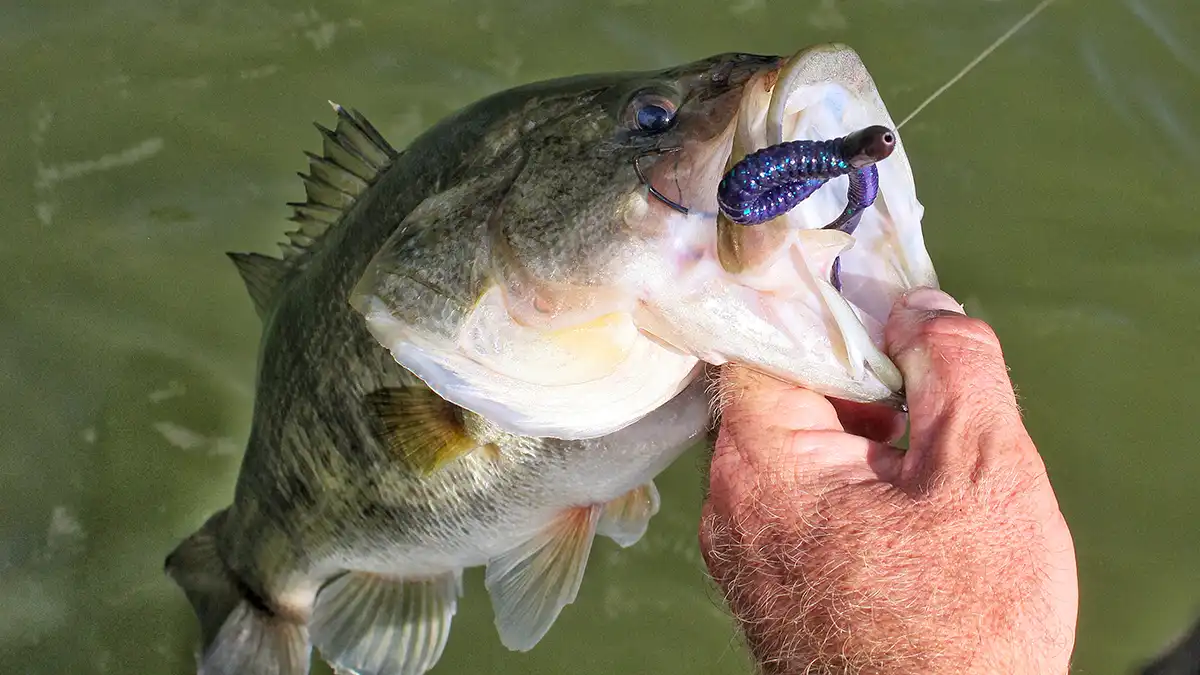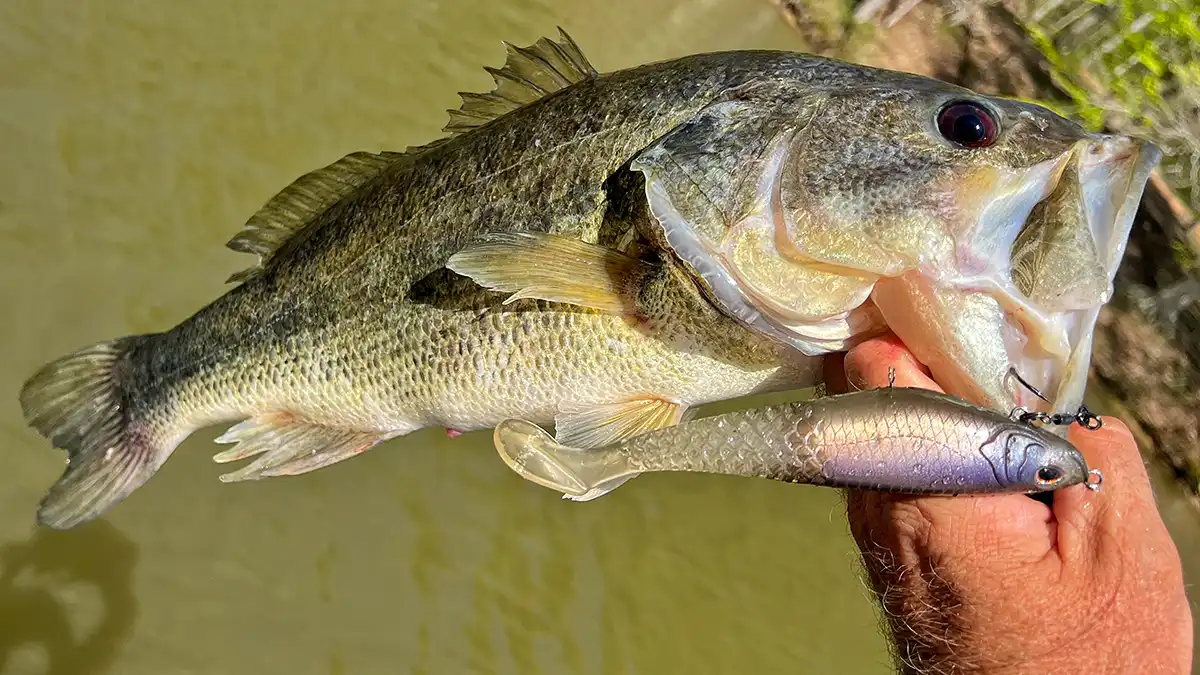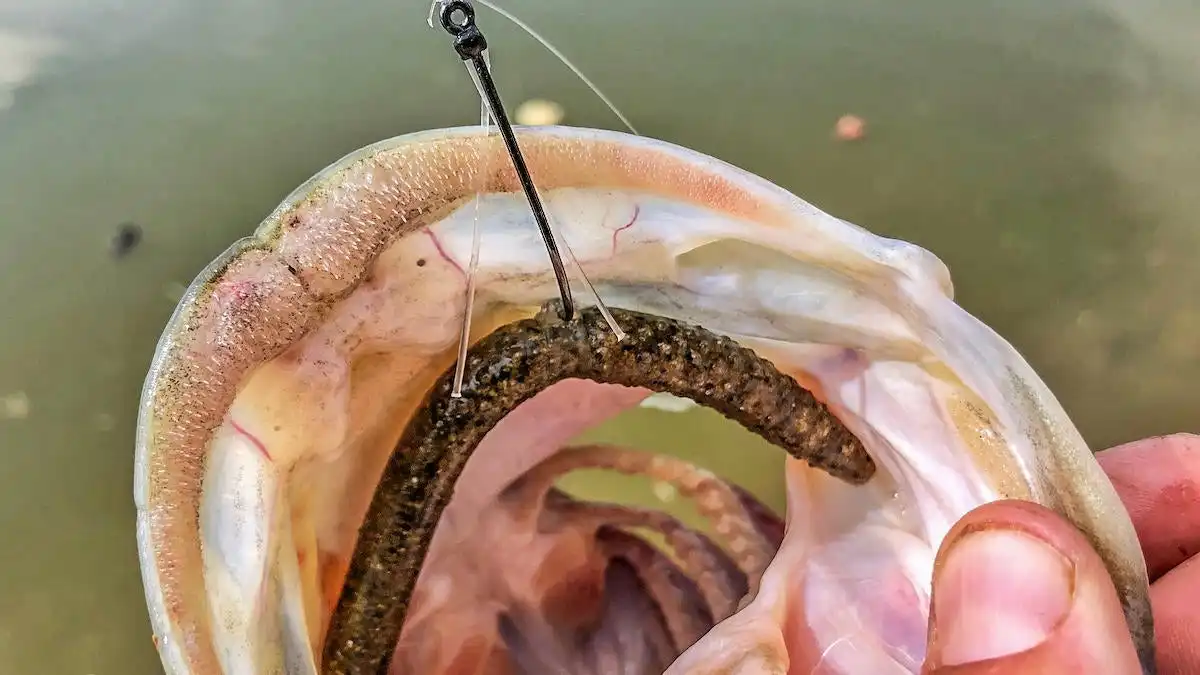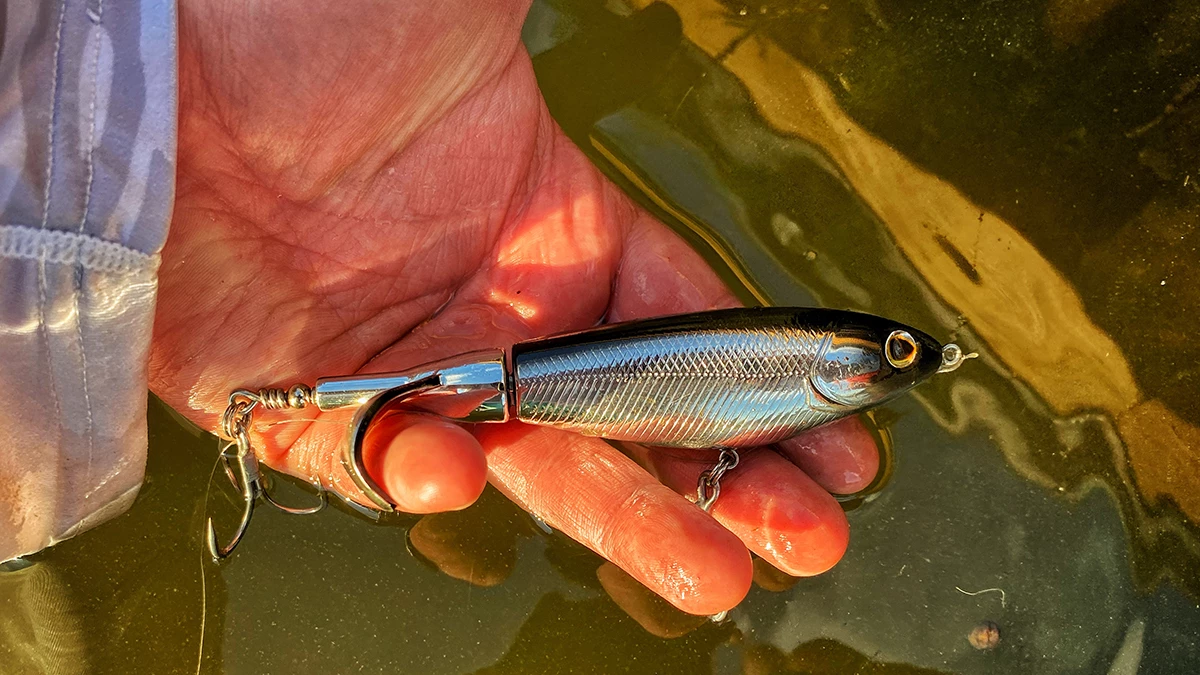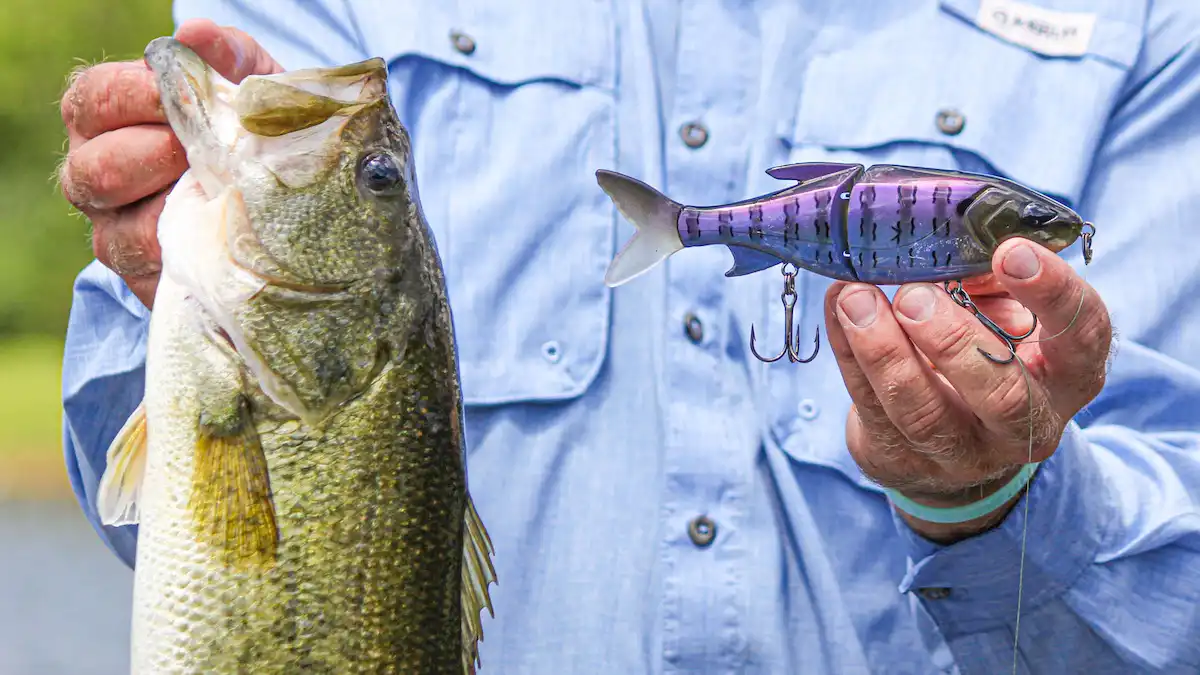Bass fishing is a whole lot of fun. While I acknowledge the focus shouldn’t only be on the big ones, since each bite is a blessing, there’s just little that compares to the pull of a true giant. I compiled a list of five of my favorite big bass catchers and talk through how you can use them to catch your personal best this summer!
BIG TEXAS RIG WORMS
Though this first one isn’t all that racy, the 10.5-inch Zoom Ol’ Monster and other long ribbon tail worms like it are some of the best big bass catchers of all time, especially once the waters start to warm up.
Largemouth bass in particular can be a little moody once the spawn winds down. Most will move offshore a bit and set up in shallow brush or along deeper ledges and shell bars. Though these bass can be reluctant to react to moving baits at times, there’s just something about the slow rippling action of a ribbon tail worm being crept along the bottom that triggers even the most lethargic big bass into biting.
Some anglers miss the importance of using the lightest weight possible with a big worm like this. Sure, a heavy bullet weight will get the bait to the bottom faster; but the slow fall that results from a lightweight presentation is more tantalizing and less intimidating to bass this time of year.
Try using a 1/4-ounce weight first to see if you can get the bait to the bottom efficiently and effectively keep it there. Sometimes, it’s just a little too deep or the current is a little too strong for this to work and you’ll have to up your weight to a 5/16th, 3/8ths or even 1/2-ounce. However, if the 1/4-ounce weight can work, you’ll find that the resulting slow fall of the bait, on the initial drop as well as when it’s slithering through submerged cover, is something big bass just can’t let go unpunished.
GLIDE BAIT
Glide baits are often associated with big fish. Perhaps just as often, unfairly ruled out as a viable option on your home water. It’s easy to be mesmerized by the West Coast anglers and tournament pros throwing these baits for big bass, while you yourself can’t throw one on your local body of water. What you’ll find out if you do, is that the biggest fish in any fishery will still eat one—whether the bass weighs 2 pounds or 12.
Glide baits like the SPRO KGB Chad Shad 180 have a wide breadth of drawing power. Bass can see these and feel these baits from further away than you might think. It’s not unheard of to catch a bass on a glide bait that’s barely as long as the bait itself. If you pick one up and stick with it a while—on almost any bass fishery in the country—you’ll start getting more and bigger bites than you’d think possible at first.
It’s important to note too that since these baits draw bass in from long distances, you can fish them around cover without having to fish them right through cover. Walking a glide bait through a lay-down is doable in time but fishing one right off to the side is also effective at drawing a fish out. When the bite does come this way, you don’t have quite as many obstacles to pull the fish out of as you would have fishing it through the heart of the cover.
You’ll probably get more fish to commit to your bait in the thick of it. However, the intimidation factor of fishing a glide bait through dense cover is enough to keep some anglers from even giving one a chance. Here’s the main takeaway: there are bass that will bite a glide bait in almost every fishery in the country. You also don’t have to be an expert with it to catch bass.
SWIMBAIT
Harnessed swimbaits, like the Berkley CullShad, and top-hook swimbaits, like Huddlestons, often receive the same admiration from the masses that glide baits do, while also experiencing some of the same prejudices. Now, while it does take a pretty large and committed fish to eat a top hook swimbait well enough for it to get caught, the expanding selection of treble hooked/harness swimbaits available now are great for catching numbers as well as the biggest bass in a fishery.
The appeal of a swimbait like this is a bit different from that of a glide bait. Harnessed swimbaits, like the CullShad for example, work a little better out in open water. You can catch bass on these baits simply by going down bare banks and throwing across points and flats as well as other areas bass are transitioning through. Whereas the glide bait is better for target fishing like alongside docks and around other cover.
This is not to say that these two bait types won’t work in a lot of the same places; the same fish that you can catch on the side of a dock with a glide bait would likely eat a swimbait skipped under the dock. There are certain situations where one is more effective than the other and the two simply aren’t always interchangeable.
When looking at just these two types of swimbaits, harnessed swimbaits will ultimately work better when fished high in the water column, or at minimum overtop of submerged cover so the dangling treble hook can clear the cover easily. Top-hook swimbaits will slip through submerged cover like hydrilla and other grasses far better.
It’s worth noting that while these single hook baits will get bit in open water too, it’s typically better to go with the harnessed baits in open water to take advantage of the higher hook-up rate of the treble hook versus single top hook.
WACKY RIG
Though a wacky rig is substantially more finessed than the other baits on this list, even more so than the big worm, it’s still the perfect bait for catching big bass. It’s far more effective than all these baits in certain situations.
When skipping docks and bushes for instance, as great as a swimbait can be, the wacky rig has a much more subtle approach and offers a less intimidating meal. This is imperative at times, especially around the spawn. Though bass are shallow during the spawn, they aren’t always aggressive. They may react to a big bait like a glide or swimbait, but not be willing to commit to those larger baits.
While you can sometimes cast a wacky rig or other finesse presentation back to these fish and get them to bite, the cat is often out of the proverbial bag once the bass show themselves in pursuit of the big bait and they won’t bite anything after that. Opt for the wacky rig first as opposed to using it as a follow up bait. While this can be a little tedious and boring at times, it’s a great way to catch giant fish—the most effective shallow water finesse presentation to use to catch big bass around cover.
WHOPPER PLOPPER/CHOPPO
Single prop baits like River2Sea Whopper Ploppers and Berkley Choppos are fantastic big bite producers in the summer. Many of the same bass that you can catch on a glide or swimbait during the pre-spawn, spawn and immediate post-spawn periods will light up a reeling prop bait like this during the summer. The main appeal to using one of these baits as opposed to the swimbaits and glides is that you can cover a whole lot more water.
As great as the glides are at drawing fish to them, the aggressive action and noise of a bait like a Whopper Plopper is unmatched in its attention-getting capabilities. Bass can hear and see these baits from a good distance away. They’ll either chase them down or be sitting on go when the bait tries to pass them by.
You can cover a ton of water with a bait like this, which becomes increasingly more necessary as the water warms. Many bass move deep in the summer, so the ones that stay shallow can be few and far between—but big and thus still worth targeting. Locking a Whopper Plopper in your hand and putting the trolling motor on high is one of the best ways to target big shallow bass in the summer, especially those relating to scattered bluegill beds.
IN CONCLUSION
As we make our way out of the spawning season and into the summer, focusing on these five bait categories can set you up for some great success when it comes to targeting big bass. Glides near the surface and Whopper Ploppers along the surface scream big bass potential, while swimbaits shimmying along below have a good bit of appeal too.
If you need a finesse approach, you can opt for the wacky rig shallow or the light Texas-rig with a big ribbon tail worm a little deeper. These two baits work extremely well at getting noncommittal bass to bite. While these presentations are slower, their hookup ratios far exceed those of some of these bigger baits. You’ll ultimately connect with more fish and have fewer near misses, per capita at least.
Whether you go with one of these finesse presentations or opt for one of the all-out power fishing approaches, you’ll find success this summer when targeting big bass. Commit to trying to catch them and you’ll find there are more quality fish in your fishery than you might have thought. You may even find that those bass will bite baits you had ruled out before.


